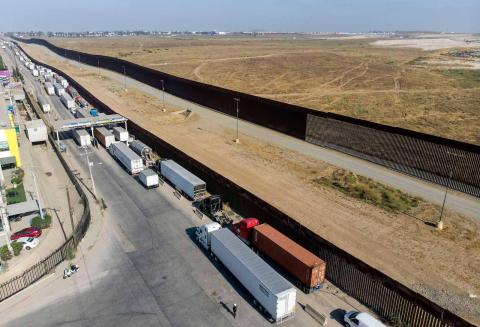Last month the Department of Foreign Affairs and Trade (DFAT) secretary, Peter Varghese, had this to say about Australia’s participation in the global movement toward preferential free trade agreements (FTAs):
To not participate would carry with it a significant potential opportunity cost, as Australian businesses’ international competitive position erodes.
I hear this reasoning a lot: if everyone else is doing it, we have to do it too. But the argument is not correct. Let me explain.

The definition of opportunity cost is a bit technical, but it is one of the most important concepts in economics. It basically means what you give up when you make a choice. So if Australia chooses not to sign an FTA, the opportunity cost is the difference between our welfare with the agreement and our welfare without the agreement. The opportunity cost of sitting out an agreement can be positive or negative. If it is positive, it means we can gain by signing onto an agreement. If the opportunity cost is negative, then the right choice is to sit it out.
Varghese is saying that when others sign FTAs, our opportunity cost is affected. But, generally, that’s not right. Let’s walk through a simple example.
Suppose Australian and New Zealand companies compete for a share of the dairy market in a hypothetical country called Marketland. Suppose further that the export market is worth $10 billion and the Australian and Kiwi companies are evenly matched. In the absence of any preference through a FTA, they split the market in half. If there is a preference toward one country, that country takes the entire market.
I have found this example is clearer if there is a further wrinkle. Suppose that a free trade agreement with Marketland contains another provision, suppose an intellectual property provision, that is costly for Australia, and it costs $6 billion.
Question: If New Zealand has a free trade agreement with Marketland, does that change the opportunity cost of a free trade agreement for Australia?
Answer: No. Let me explain. [fold]
First, suppose there is no agreement between Marketland and New Zealand. If Australia were to sign an agreement with Marketland, then we would be able to sell an extra $5 billion of milk (we go from half the market to all of it), but at a cost of $6 billion through the intellectual property provisions. If we sit out the agreement, we get an extra $1 billion than if we signed on. The opportunity cost of the agreement is negative $1 billion.*
Now suppose there is a pre-existing agreement between Marketland and New Zealand. If we sign an agreement, we go from selling zero milk to Marketland to selling $5 billion worth, so again increasing exports by $5 billion. But, again, it comes at a cost of $6 billion. The opportunity cost of the agreement is negative $1 billion, so the opportunity cost has not changed.
What other countries do affects our starting point, but for the most part these other agreements do not affect the overall value of an agreement of our own. The simple example above demonstrates that point. If New Zealand has a pre-existing agreement, we start off in a worse place: we start with none of the dairy market rather than half of it. But the change in welfare as a result of signing the agreement, measured here by the opportunity cost, does not change.
Confusion on this point is rife. You could see it, for example, in DFAT’s National Interest Assessment of the Korean Free Trade Agreement, where it refers to 'the opportunity cost of not proceeding with KAFTA in light of the ROK’s free trade agreements with the United States and the European Union'.
Here’s a challenge for DFAT. If it chooses to model the effect of the Trans Pacific Partnership (and I think it should), then try doing it with different assumptions about which other agreements exist, for example, the TTIP (Transatlantic Trade and Investment Partnership). I reckon it would make little difference to the cost-benefit analysis.
*This summary of the effects of the agreement may cause economists to be overcome with despair. I’m overlooking issues like the cost of the resources used to produce the extra milk. You are going to have to trust me that this is a secondary consideration for the point I am making in this post.
Photo courtesy of Flickr user Jed Sullivan
